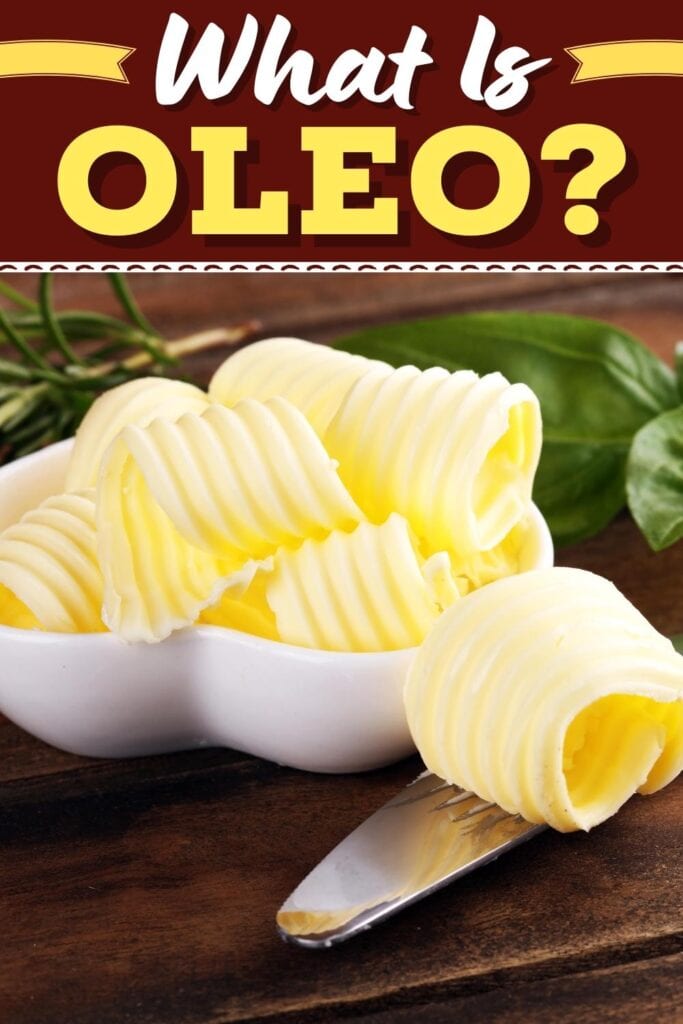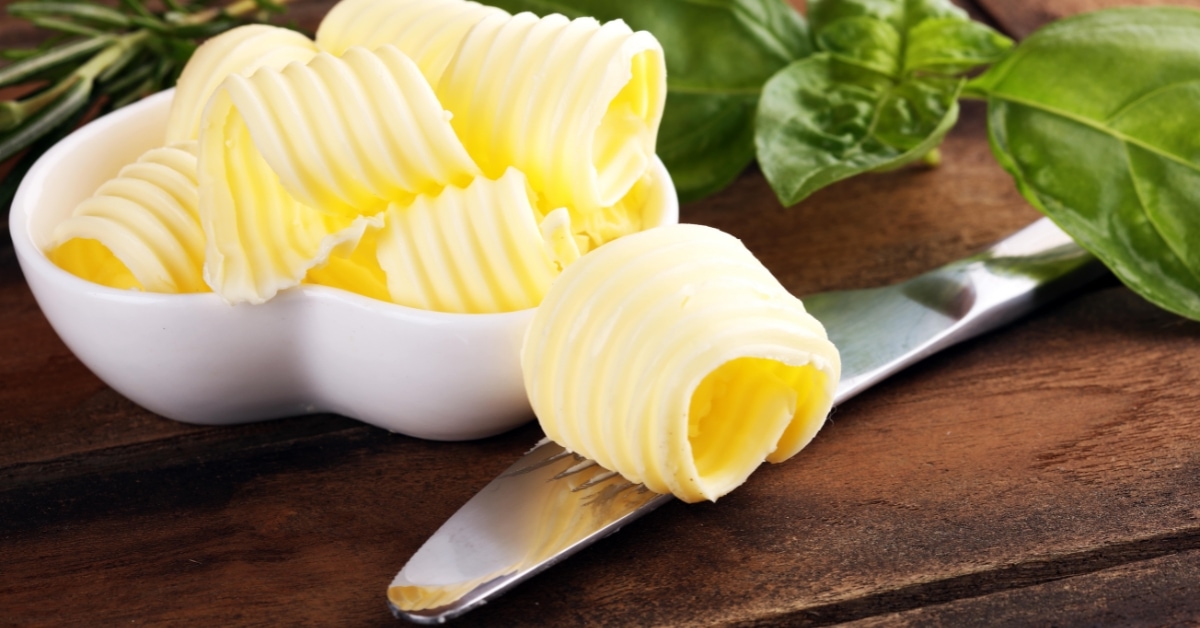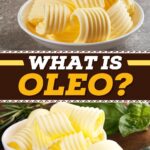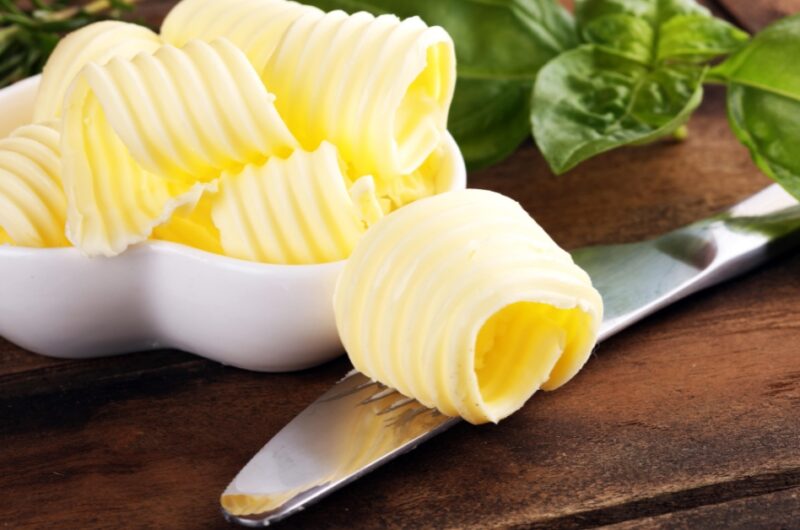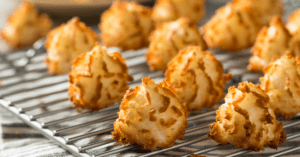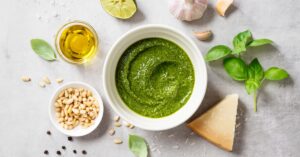I had a friend ask me recently, “What is Oleo?” And while the term may not be the most well-known, the answer is simple.
Oleo is a plant-based spread made from refined vegetable oils and water. It’s often whipped to emulsify and remains spreadable in the fridge. Also known as margarine, it was developed to taste like butter and can be used in many recipes as a butter substitute.
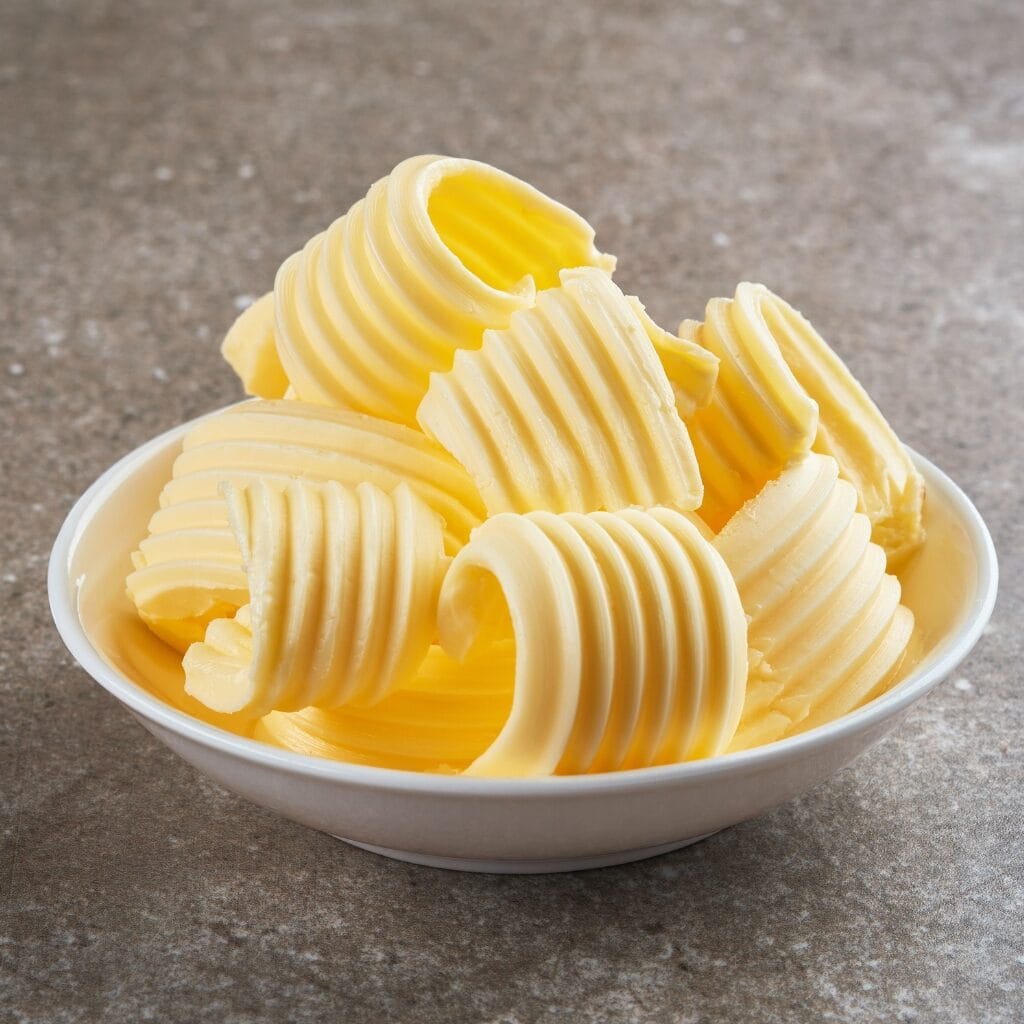
I know you’ve heard of margarine, and chances are, you have some in the fridge right now.
But maybe you don’t know exactly what’s in that tub. And that’s okay!
That’s what this post is all about. So let’s dive into oleo together.
Is Oleo Butter?
Put simply, no.
Oleo is not butter, but it is a butter substitute. The proper name is oleomargarine, though it most often goes simply by margarine. And where butter is made of churned cream, oleo is a combination of skim milk powder or whey products, vegetable oil, salt, and (usually) yellow dye.
The three primary ingredients undergo a serious whipping process to ensure it’s smooth.
And it’s during this whipping and blending, manufacturers add the yellow dye to make it look more like real butter.
Fans of oleo claim it’s a healthier alternative to real butter. However, at 80% fat and artificially manufactured, many people disagree.
Whether it’s healthy or not, there’s no denying it’s a popular butter substitute.
In many cases, if you can do something with butter, you can also do it with oleo.
But the world already had butter. So why did people feel the need to make oleo in the first place?
Let’s find out.
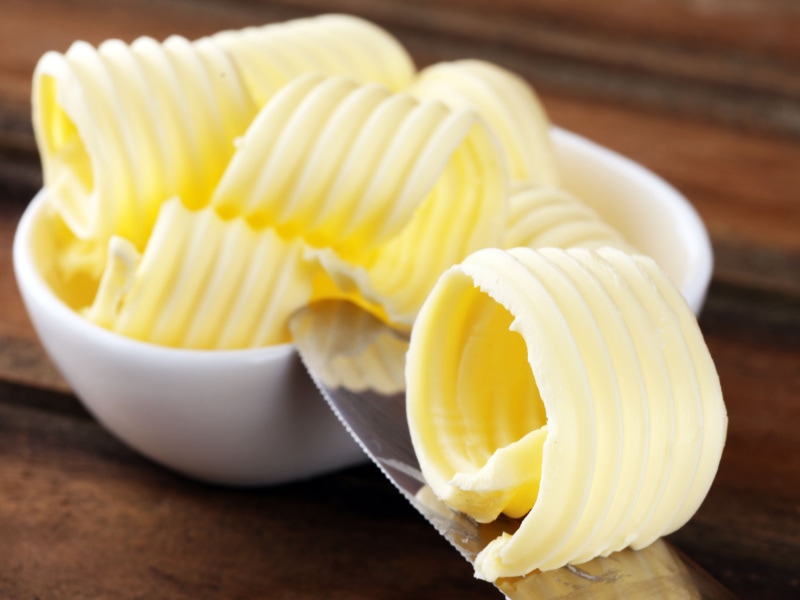
What Is Margarine? Brief History
I don’t typically talk about the history of recipes in my posts. However, oleo actually has a fascinating backstory that’s too fun not to share.
It all starts with a competition…
Margarine (oleo) was created in 1869 in France when the country was suffering a serious butter shortage.
Napoleon III held a country-wide competition, offering a very enticing prize to anyone who could solve the butter shortage problem.
Enter Hippolyte Mège-Mouriès, a chemist who specialized in food experimentation. He used hydrogenation to create a butter alternative.
Margarine is a blend of oils and water, but it was first made of beef tallow and milk. And through the process of hydrogenation – introducing hydrogen to heated oil – the blend became an emulsion.
Napoleon III declared Hippolyte Mège-Mouriès the winner, gave him his prize, and ran with his idea.
The food spread quickly across France and then the rest of Europe. People loved it everywhere it went – until it came to America, that is.
Oleo in America
The first mass-producing of oleo happened at the Oleo-Margarine Manufacturing Company in NYC.
The company made oleo and marketed it as “real butter” at a much lower price. They also added yellow dye to oleo to make it look like butter.
This infuriated both butter manufacturers and dairy farmers. So they turned to Congress to fix the problem.
This led to all kinds of issues with oleo:
- The Oleomargarine Act of 1886 taxed any oleo-tainted butter at two cents per pound.
- Some states banned oleo outright.
- Wisconsin, for example, banned all yellow oleo ostensibly to keep manufacturers from marketing it as butter.
Many likely thought it would put the companies out of business. It didn’t; it only led to them being more creative.
They didn’t stop making oleo; they just stopped making yellow oleo.
Believe it or not, they used red dye and produced pink oleo instead! (The Wisconsin ban ended in the 1960s; unfortunately, pink oleo died out with it.)
Today, the name “oleo” may be less well-known, but everyone still knows about margarine.
And under that name, oleo is still going strong, albeit no longer pink.
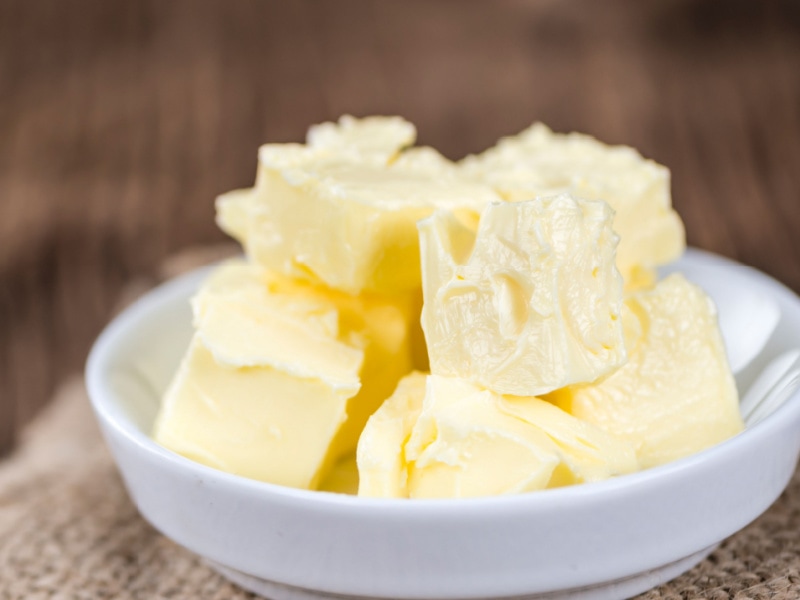
Oleo vs. Butter (What’s the Difference?)
As mentioned, oleo gets its color from artificial dye. Without that, it would be milky white.
But that’s not the only difference between oleo and butter.
The primary difference is the type of fat each one contains.
The Difference in Fats
- Most butter is all-natural and made by churning milk. That means it’s high in saturated fats and cholesterol.
- Oleo, in contrast, comes from vegetable oil. Therefore, it is higher in monounsaturated fats, polyunsaturated fats, and trans fats.
Monounsaturated and polyunsaturated fats are far preferable to the saturated fats in real butter.
That’s why so many people claim that margarine is healthier than butter.
However, the trans fats in oleo aren’t so good for you. Additionally, oleo is highly processed, whereas butter is natural.
Additionally, the chemical makeup of fats leads to another difference between the two:
- Butter is hard and can sit out at room temperature without melting.
- Margarine is much softer and melts more quickly.
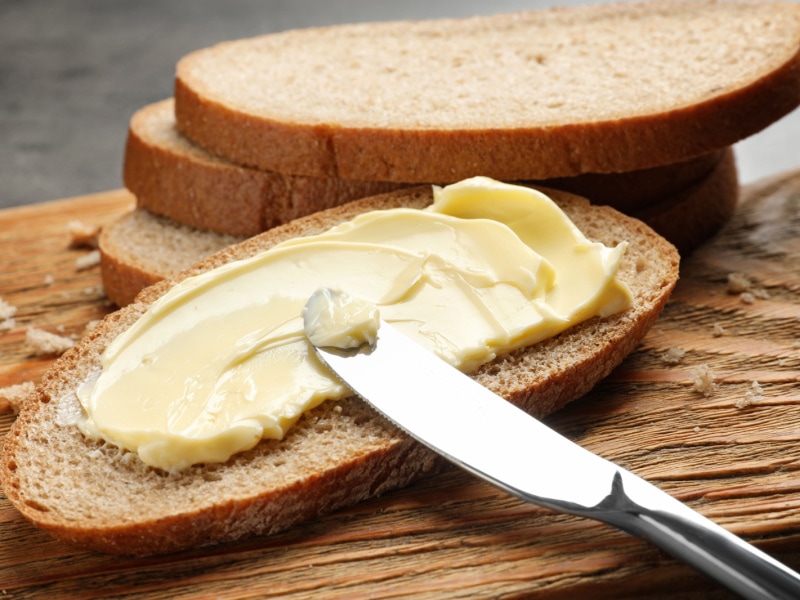
Can You Substitute Oleo for Butter?
Oleo is an excellent substitute for butter, as that was why it was initially created. The two are practically interchangeable in most recipes. However, oleo is not the best option for certain recipes, such as certain cookies and cakes that need the stability of butter to maintain the structure.
It’s common to find recipes instructing you to use “real butter.”
Sometimes it’s about structure, and sometimes it’s about taste. Butter has a richer flavor, after all.
As for structure, I’ve used oleo instead of butter in a few cookie recipes; for the most part, it’s hard to tell the difference.
You may notice that the dough feels softer, and the cookies spread more than usual.
So, the quick and easy answer to this question is yes. You can substitute oleo for butter – even in baked goods and fried foods.
However, you may not get the results you want in every recipe.
